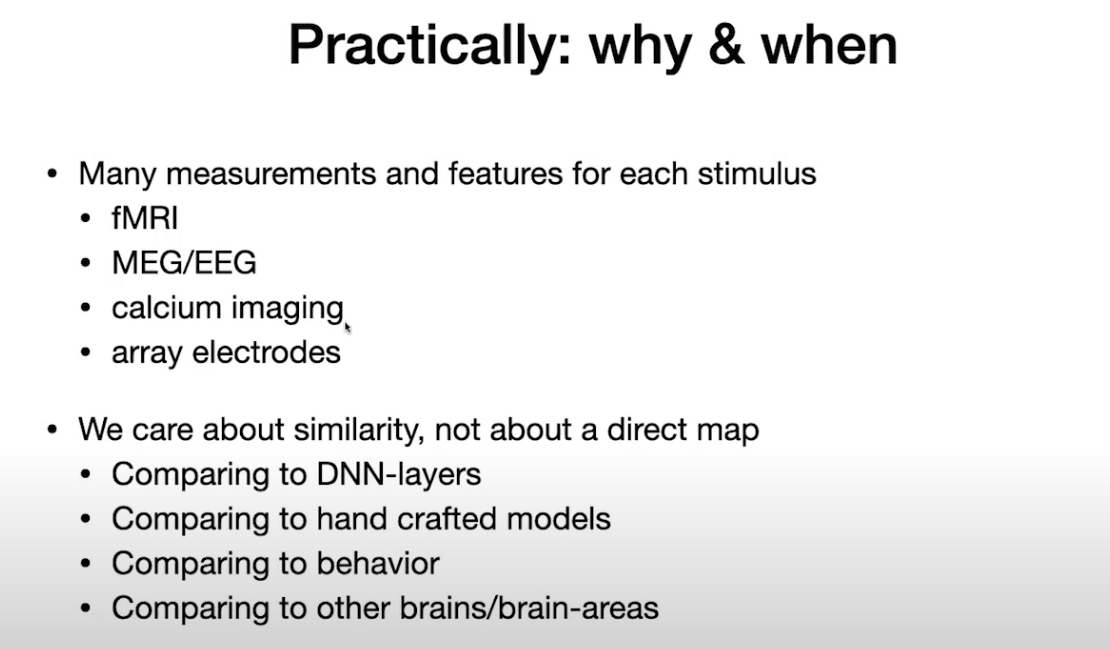Some Paper Notes on Computational Cognitive Science
Computational Cognitive Science Paper
- So this is essentially our improvements for representational similarity analysis, which is the method for comparing representational geometries Niko's lab has been working on for quite a while.
- Use hand crafted models and heuristic feature.

- Nosie -- diffusion model -encode - decode
- Align --
- 大脑结构、活动和认知功能之间的关系
- 脑内分区发挥作用可能需要整脑的配合
- The lesion method refers to an approach whereby a focal area of brain damage is correlated with the development of a defect in some aspect of cognition or behavior, and then an inference is made that the damaged brain region is part of the neural substrate for the impaired function.
- robustness -- distortions
- Interpretability
- Resampling
- Machine learning models are optimized for accuracy rather than interpretability or causality. Statistics vs Machine Learning
- Neuronal tuning refers to the hypothesized property of brain cells by which they selectively represent a particular type of sensory, association, motor, or cognitive information.
- The paper argues that representational geometry provides a useful intermediate level of description that captures both the information and the format of neural representations, and enables testing cognitive and computational theories of brain information processing.
- The paper aims to create a deep neural network that can learn a common representation for three natural modalities: vision, sound, and language. The representation should be aligned across modalities, meaning that similar concepts should have similar representations regardless of the input modality. (align)
- They also claim that DNNs are the current best models of human vision, because they can take images as inputs, perform visual tasks at human-like levels, and match neural representations in the brain.
- The dissimilarity measures are biased by measurement noise. (cross-validation);
- The model shows similarities to the human visual system in terms of the features and segmentation it learns, and suggests possible mechanisms for object-based attention and grouping.
- The paper also shows that DNNs trained directly on distorted images can surpass human performance on the exact distortion types they were trained on, but they have poor generalization abilities when tested on other distortion types.
-
Comparing the network predictions with a heuristic search model of human planning, which uses a heuristic function and a decision tree to evaluate board positions and select moves.
-
Point estimate observers: A new class of models for perceptual decision making that avoid the complex and costly computation of Bayesian inference by using maximization instead of integration over possible world states.
- CONTRASTIVE
、some possible research topics on neural network models of human visual processing:
- Training artificial neural networks with data from real brains to make computer vision more robust 1.
- Broadening our knowledge of the structure and function of visual circuits underlying visual perception and behavior 2.
- Exploring the differences between deep convolutional neural networks (DCNNs) and human visual processing to improve AI applications 3.
- Performing rigorous testing of computational models that mimic the brain’s visual cortex 4.
- Investigating current brain-inspired object recognition models and their underlying visual neural mechanism 5.